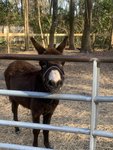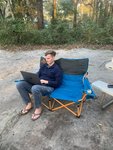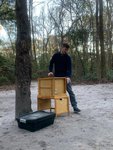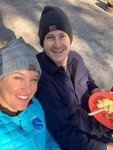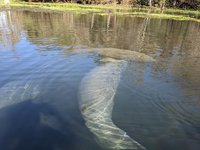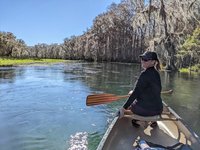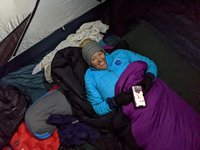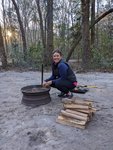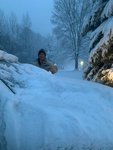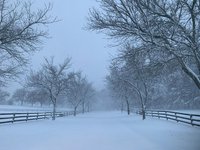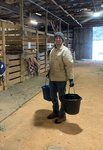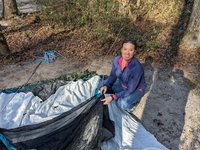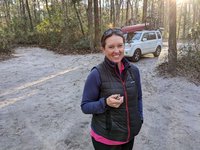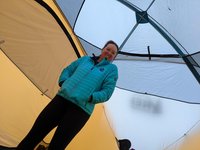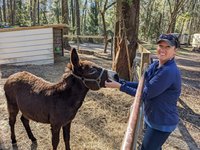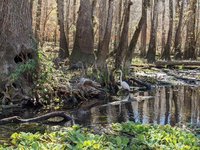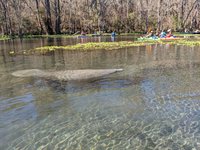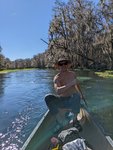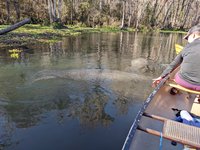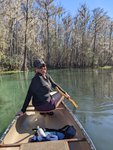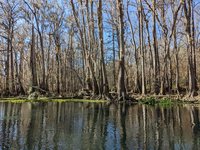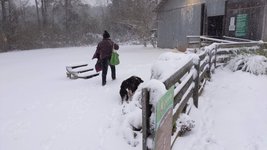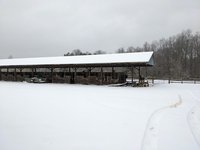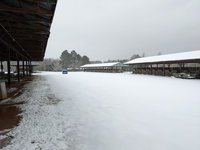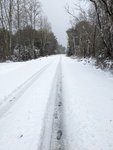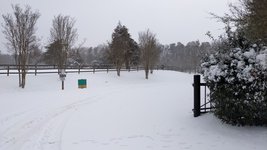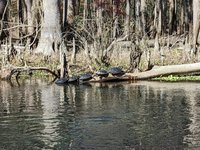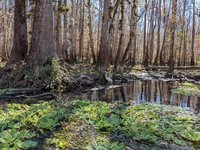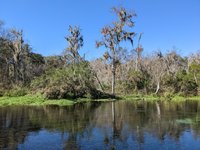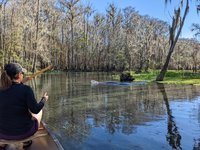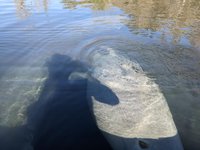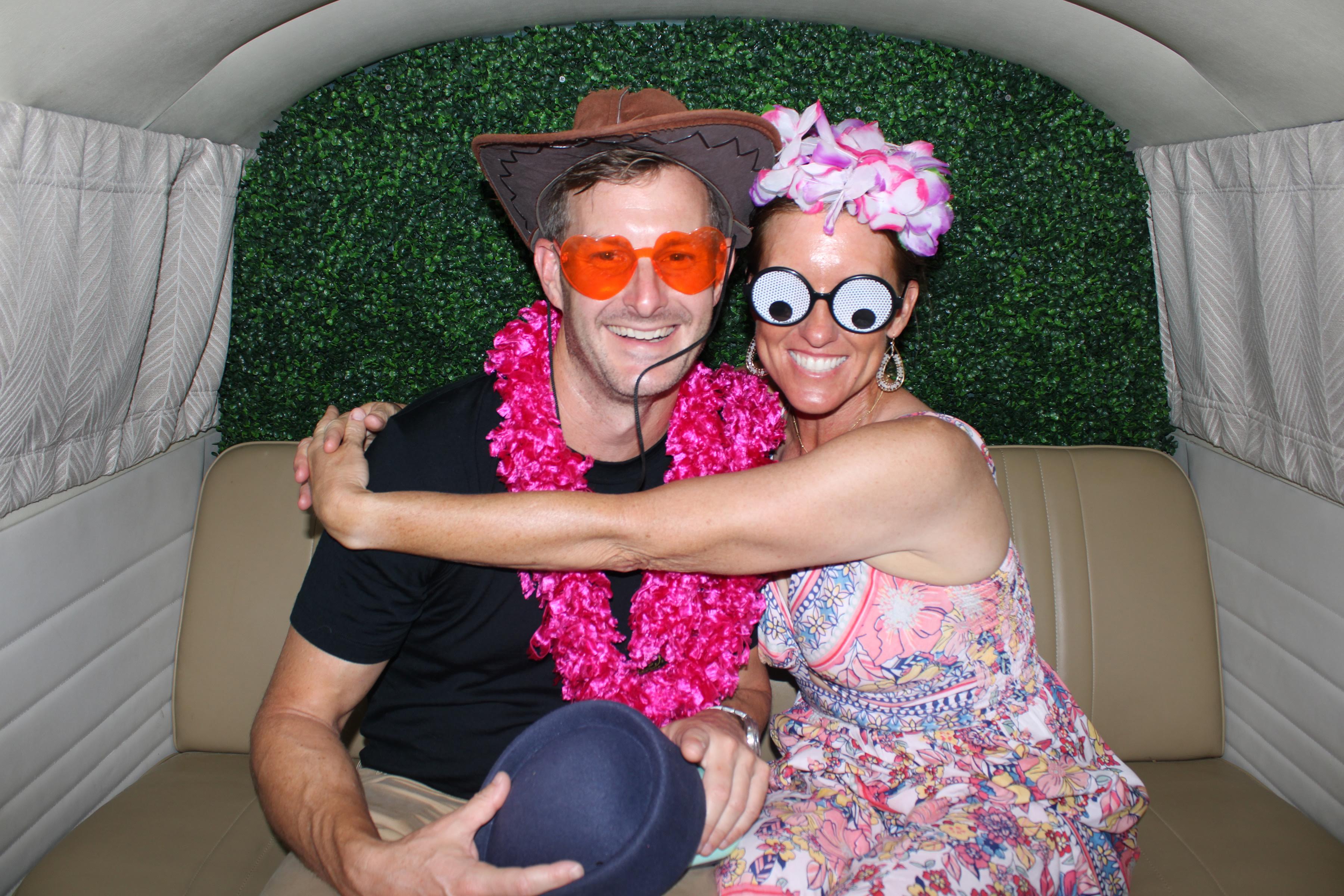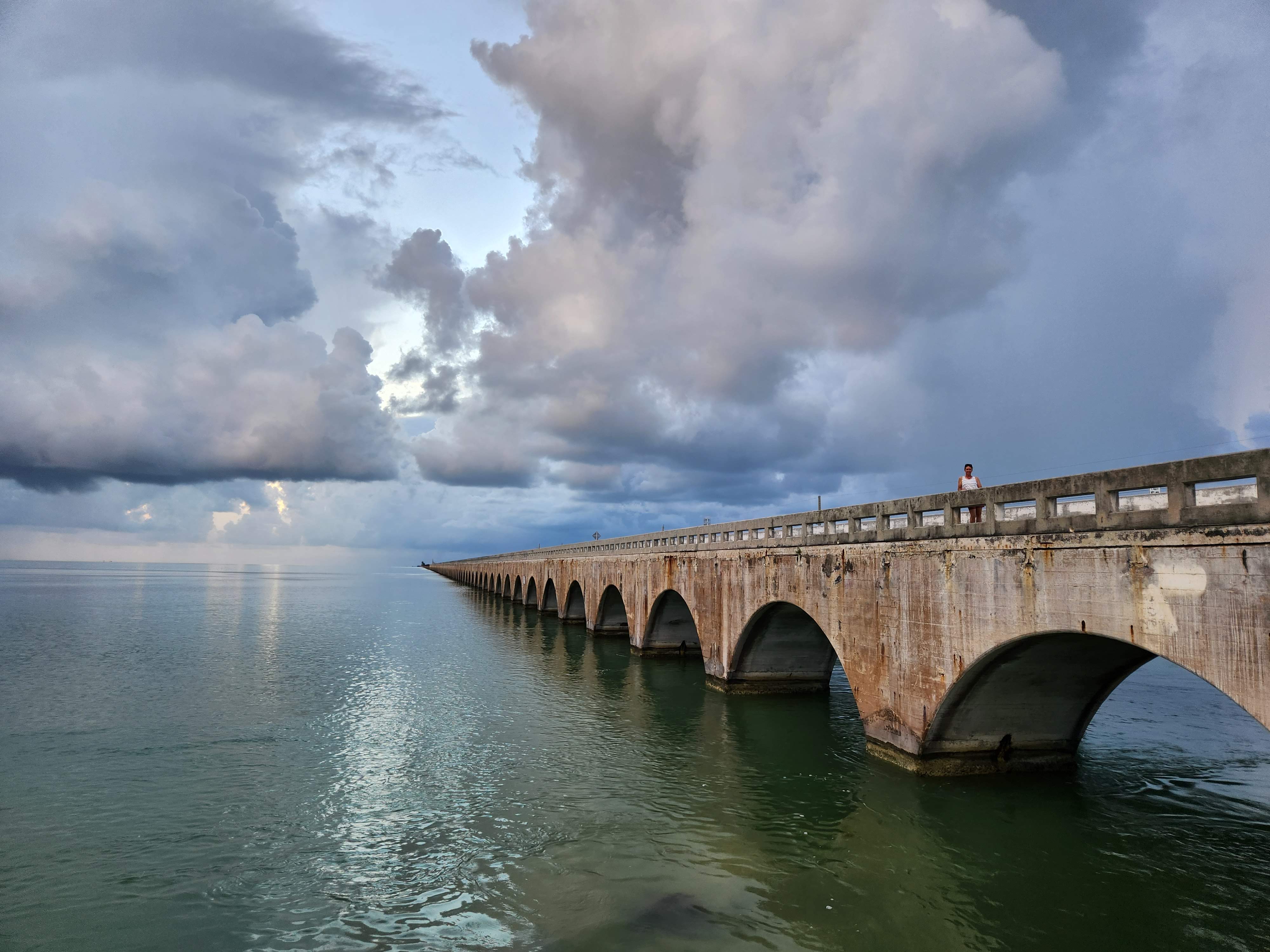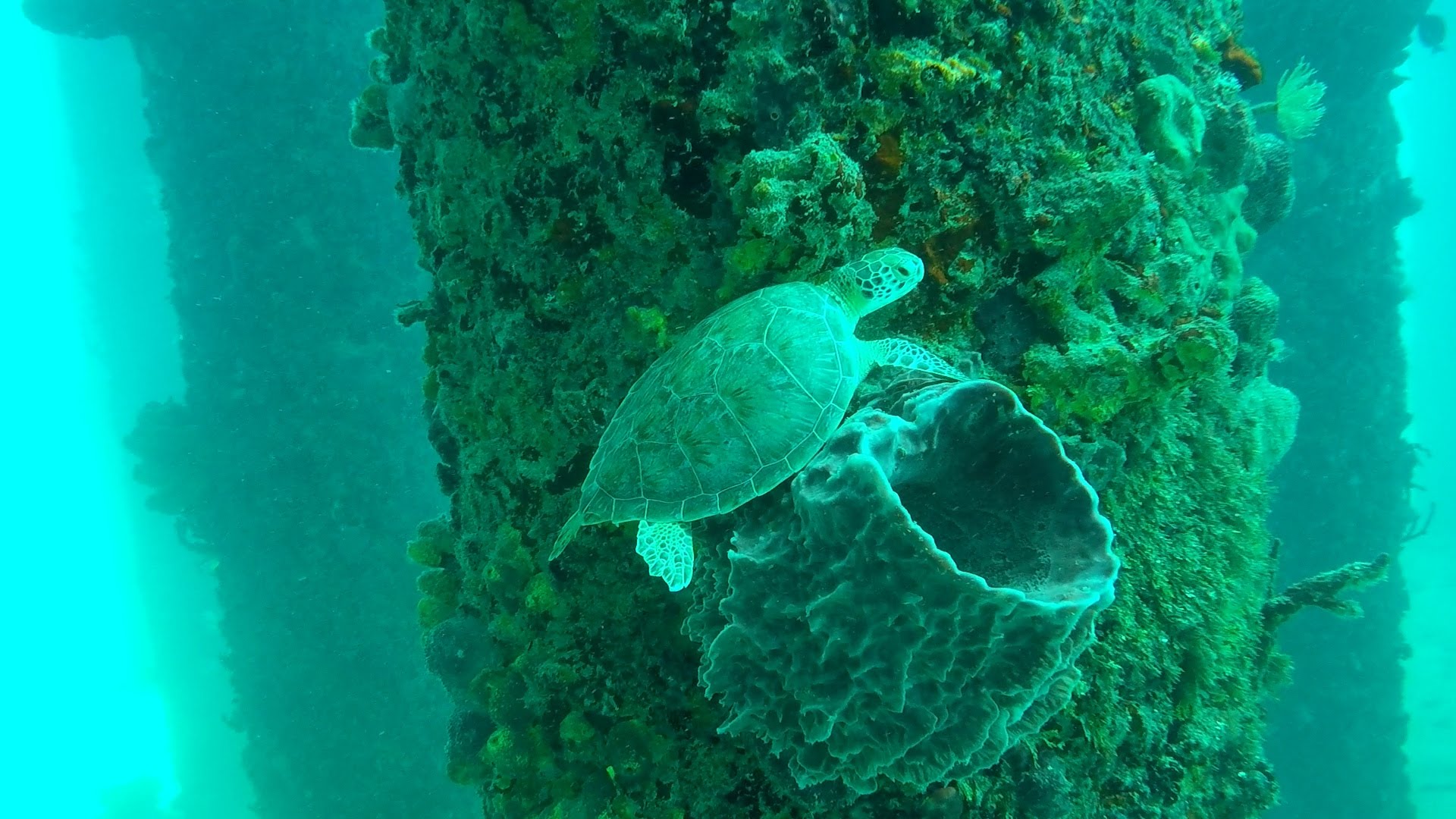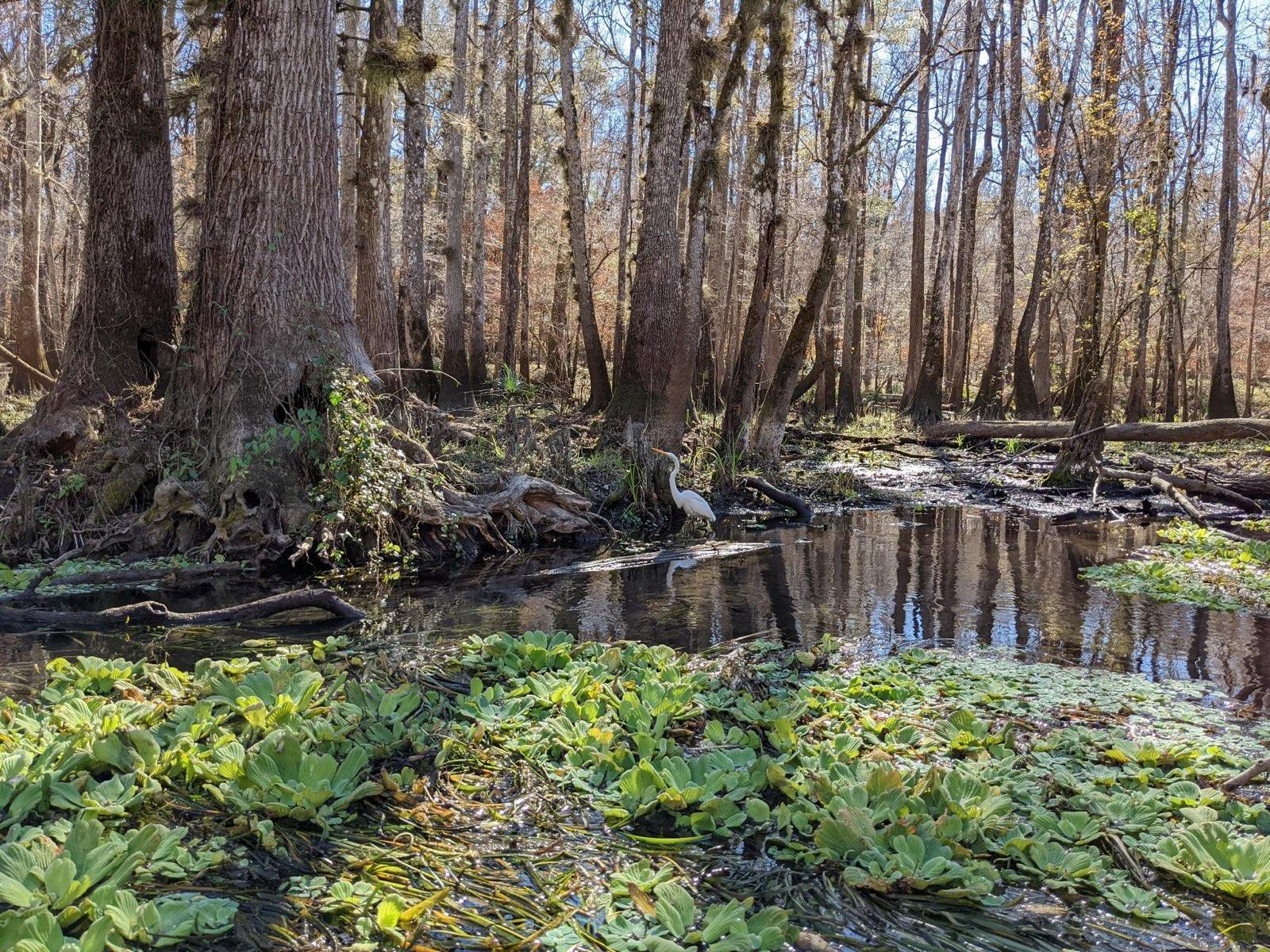
40 miles northeast of Gainesville, Florida, in the small tucked away town of Fort White, there exists a 6 mile river named the Ichetucknee. A tributary of the Santa Fe River, it is created by nine springs that pump out 200+ million gallons of crystal clear water a day, and has some of the most surreal and stunning scenery on the planet. On Friday, January 14, we said goodbye to Gus and Alex, and headed north to Ichetucknee Springs to set up camp to be able to canoe this unique river on the last day of our trip. We had originally planned to spend two nights in the area on our way back home, but an impending huge snowstorm was rudely headed towards the East Coast, and would eventually dump 8+ inches of snow on the South Carolina Upstate.
There is no camping within Ichetucknee Springs State Park so we set up camp at the nearby Ichetucknee Springs Campground. This was the second time I had camped with Scott and the first that I had been there to help with the setup. He has it down to a science and it was fun to watch and help with the process. The campground was small and oddly also hosted a petting zoo. Our wooded campsite was well kept and somewhat secluded although we could still hear the resident donkey when he got to braying.
Since it was a weekday, Scott was still working while we were setting up camp and my job was to start the campfire for us to have our baked potatoes and wood fired steaks for dinner. I was given a tutorial on fire starting and fire tending and then attempted it. Unfortunately we discovered the firewood was pretty wet so it was a struggle to get it going. Luckily Scott has a small portable fan he keeps in his camping kit that helps oxygenate the fire and it worked like a charm.

Our dinner was fantastic- the wood fire gave the steaks incredible flavor and I was surprised by how easy it was to cook the potatoes (wrap them in foil, throw them in the fire and turn them every so often). We made s’mores and enjoyed the fire until the temp dropped and we called it a night and retired to the tent. The low that night was supposed to be in the upper 30’s which is pretty chilly for camping- I slept bundled up in the mummy sleeping bag that’s rated for -20℉ with my winter jacket and beanie on and was comfortable.
We slow rolled it the next morning, not wanting to get out of the tent while it was so cold. Eventually we got up and Scott brewed cowboy coffee for us, then made scrambled eggs and bacon. I’ve discovered that there is something special and extra tasty about camp meals that makes them more delicious than their cooked-in-a-kitchen counterparts.
Late morning we broke down the campsite and headed to the Ichetucknee- I was so excited for Scott to see it. The main canoe/kayak launch near the headsprings was under repair so we had to put in at Dampier’s Landing which was about halfway down the short river, and meant for an upstream paddle the first half to the headsprings, then a downstream float on the way back. The trip was about 5 miles and it took us about two and half hours to paddle.
We had been been on the river for no more than a minute when we saw our first manatee- it was nonplussed as we glided right over it and watched it slowly swimming its way along upriver. It was a foreshadowing of all the huge sea cows we would eventually encounter on our float that day- the cold temps in the Gulf had sent them all inland, searching for warmer water.
The area around Dampier’s Landing has a swampy feel to it despite the unbelievably clear water. The river is narrow here and the Spanish moss laden cypress and live oaks form a dark tunnel over the water effectively blocking out sunlight. Every log was covered by turtles and they were also easy to spot swimming underneath our canoe. Eventually the river widens out and becomes more marshy and the bird life here was stunning- both in it’s variety and abundance. We saw wood ducks, great blue herons, and egrets, and heard (but never spotted) barred owls. Prehistoric looking alligator gar swam along beside us and despite looking like they could easily devour you, evidently they are harmless to people.

We came around a bend in the river and saw lots of paddlers hanging out in a lagoon. A kayaker we had passed early on told us to be on the lookout for a family of manatees so we guessed that’s what everyone was watching and we paddled over to join them. Sure enough, there were several manatees- there must have been about eight of them and there were a few babies. This group was more boisterous than the ones we had encountered on the Crystal River and some of their “aggregation” (that’s the official name for a group of manatees- you can file that away and thank me later when it shows up as a question on trivia night at your local bar) rough housed and played with each other.

After our Crystal River manatee encounter I was curious about the unusual animals and did some Googling. I will spare you from telling you everything I learned but I will share the things I found interesting. Manatees of course are herbivores and unfortunately are facing challenges as their environment is affected by climate change and human encroachment. (Unfortunately record numbers are dying due to starvation and the state of Florida is working to come up with successful programs to save them and to turn this trend around.) They eat a very specific type of marine grass and are “hind gut fermenters,” as are horses. This means they rely on a part of their large intestine, the cecum, and its billions of beneficial gut flora inhabitants within, to do the main slow digestion of the fiber that they eat so that they can use it for energy. One of the byproducts of that fiber digestion is gas, and they use that gas to help regulate their buoyancy. You’ll notice little bubbles floating their way up to the surface when you see a manatee… that’s manatee tooty gas. I love to nerd out on animal facts and Scott likes to tease me.
After enjoying observing the aggregation we continued upstream and began to encounter many of the springs that create and feed the Ichetucknee. Most are roped off to protect the fragile spring ecosystem. We made our way up as close to the head spring as we were allowed and then turned around. The paddle back was much quicker since we were now going with the current.
When we reached Dampier’s Landing we took the canoe out and Scott impressively hoisted it over his head and we made the quarter mile walk back to the parking lot. We packed up the paddling equipment and then drove to the other side of the state park to have our picnic lunch (I remembered to put the turkey on the turkey sandwiches this time!) and to go have a quick peak at the main headspring as well as the Blue Hole, a popular cave diving spot which of course intrigued Scott. Unfortunately we didn’t have much time to spend at these spots since we were racing against the snow storm that was stalking it’s way towards the South and we wanted to get safely home before the weather turned bad.
Sidenote: We arrived safely back to SC, albeit quite late, before the snow started. Scott had wisely suggested we stop by his parent’s property in Easley to collect cold weather/snow gear and equipment. The next morning he came to help me feed the horses in the snow and I was thankful we were well equipped and had the tow straps and shackles when the 4Runner slid off the road into a ditch. We were able to go fetch the tractor and easily pull it out. I was thankful that he didn’t ever have to use the chainsaw- typically with the winter weather we get in the Upstate, the freezing rain happens first which downs trees and powerlines and makes it nearly impossible to drive anywhere. This particular storm was snow only which was a pleasant change.
